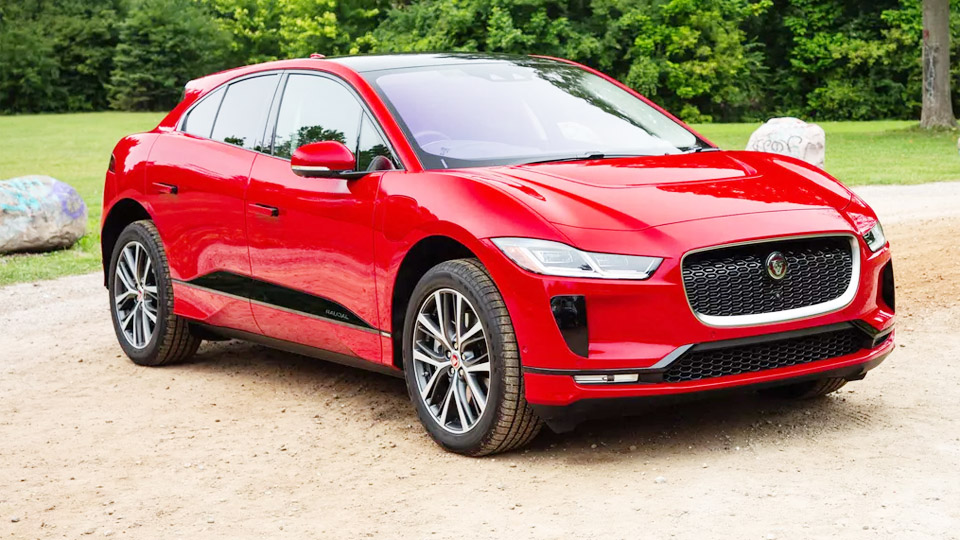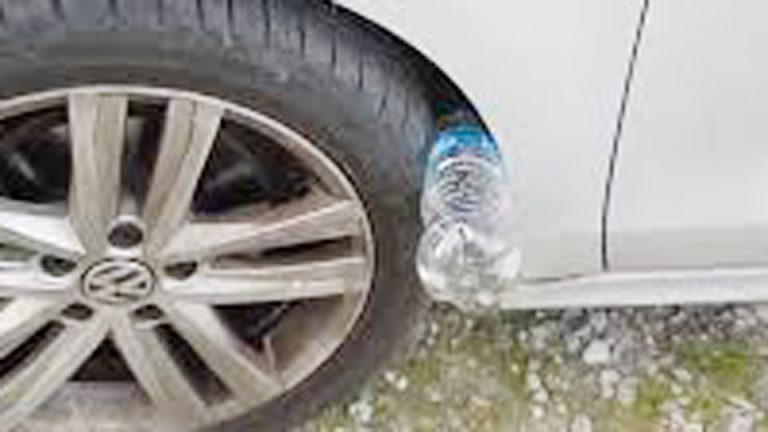If you’ve ever peeked under the hood of a gas-powered car and then compared it to an electric vehicle (EV), you’ve probably noticed some big differences. One question I get a lot from curious car folks is: why do electric cars not have alternators on the wheels? It’s a great question, especially since alternators are such a key part of traditional cars.
I can tell you it all comes down to how EVs are designed and how they manage power. Unlike gas cars, EVs don’t need alternators—on the wheels or anywhere else—because their systems work differently.
Let’s dive into this topic like we’re chatting in my garage, exploring why alternators aren’t part of the EV equation and what makes these vehicles tick. Buckle up, because we’re about to take a deep dive into the world of electric cars!

Image by carpages
What’s an Alternator, and What Does It Do in a Gas Car?
To understand why electric cars skip alternators, let’s start with what an alternator does in a traditional gas-powered car. Picture your car’s battery as a bucket of water—it holds a limited amount of power.
When you’re driving, things like your lights, radio, and air conditioning draw water from that bucket. The alternator is like a pump that keeps the bucket full by generating electricity while the engine runs.
In a gas car, the alternator is a small device bolted to the engine, driven by a belt connected to the crankshaft. As the engine spins, the alternator turns, creating electricity to recharge the battery and power the car’s electrical systems.
Without it, your battery would drain fast, and you’d be stuck. I remember working on my old Honda Civic when the alternator belt snapped. The battery light came on, and I barely made it home before the car died. That’s how critical alternators are in gas cars.
How Electric Cars Handle Power Differently
EVs don’t have internal combustion engines, so there’s no crankshaft or belt to drive an alternator. Instead, they rely on a high-voltage battery pack—think of it as a giant bucket of power—that supplies electricity to the electric motors, which drive the wheels.
This battery pack is way bigger than the 12-volt battery in a gas car, often holding enough energy to power the car for 200–400 miles.
In an EV, the battery pack is recharged primarily by plugging into a charging station or wall outlet, not by an alternator. The electric motors themselves don’t generate electricity while driving in the way an alternator does.
However, EVs do have a clever trick called regenerative braking, which we’ll get to later. The key point? EVs don’t need alternators because their entire power system is designed around the battery pack and external charging.
I got my first up-close look at an EV’s power system when a buddy let me poke around his Tesla Model 3. No belts, no pulleys—just a sleek battery pack and motors. It was a whole different world from the gas cars I was used to.
Why Not Put Alternators on the Wheels?
You might be thinking, “Okay, but why not stick alternators on the wheels to generate extra power while the car’s moving?” It’s a logical idea—after all, the wheels are spinning, so why not use that motion to make electricity? I’ve heard this question from folks at car meetups, and it’s worth breaking down why it doesn’t work for EVs.
Energy Conservation and Efficiency
Here’s the deal: adding alternators to the wheels would actually make the car less efficient. In physics, there’s no such thing as free energy. If you put alternators on the wheels, they’d create drag—resistance that the electric motors would have to work harder to overcome.
The motors would need to draw more power from the battery to keep the car moving, canceling out any electricity the alternators might generate. In fact, you’d likely lose more energy than you’d gain due to inefficiencies in the system.
Think of it like trying to charge your phone by pedaling a bike with a generator attached. Sure, you’re making some power, but you’re also working harder to pedal. I learned this lesson when I tried rigging up a small generator on a go-kart as a kid—it slowed the kart down and barely produced any usable power.
Regenerative Braking Does the Job Better
EVs already have a way to capture energy from the wheels: regenerative braking. When you lift off the accelerator or apply the brakes, the electric motors switch into generator mode, converting the car’s kinetic energy back into electricity to recharge the battery. It’s like an alternator built into the motor itself, but way more efficient because it doesn’t add extra components or drag.
I drove a Nissan Leaf for a week and was blown away by how much range I gained back just from regenerative braking in city traffic. It’s a slick system that makes wheel-mounted alternators unnecessary. Why add a clunky alternator when the motor can do the job?
Space and Weight Constraints
Electric cars are designed to be as lightweight and compact as possible to maximize range. Adding alternators to the wheels would mean extra hardware—gears, belts, or direct-drive generators—that take up space and add weight.
More weight means the motors work harder, draining the battery faster. Plus, fitting alternators on each wheel would complicate the suspension and wheel assembly, making maintenance a nightmare.
When I helped a friend install aftermarket wheels on his Chevy Bolt, I saw how tight the space is around the wheel hubs. There’s no room for an alternator without major redesigns, and the added weight would cut into the car’s efficiency.
Electrical System Differences
In a gas car, the alternator produces low-voltage electricity (around 12–14 volts) to charge a small battery and power accessories. EVs use high-voltage systems (200–800 volts) to drive the motors and charge the massive battery pack.
An alternator on the wheels would need to produce high-voltage power to be useful, which is complex and inefficient compared to the existing motor and regenerative braking setup. The EV’s onboard charger and power electronics already handle converting and managing electricity, so an alternator would just be redundant.
How Regenerative Braking Replaces the Alternator
Let’s talk more about regenerative braking because it’s the real star of the show in EVs. When you slow down or brake, the electric motor reverses its role. Instead of drawing power from the battery to spin the wheels, it uses the wheels’ motion to spin itself, generating electricity that flows back to the battery. It’s like turning your car’s momentum into free charging.
Regenerative braking is way more efficient than a wheel-mounted alternator could ever be. For one, it’s integrated into the motor, so there’s no extra hardware. It only kicks in when you’re slowing down, so it doesn’t add drag while you’re driving.
I noticed this when driving a Tesla Model Y—the car felt like it was “gliding” to a stop while adding a few miles of range back to the battery.
Here’s a quick comparison of alternators vs. regenerative braking:
| Feature | Alternator (Gas Car) | Regenerative Braking (EV) |
|---|---|---|
| Power Source | Engine crankshaft | Wheel motion via motor |
| When It Works | When engine is running | When slowing or braking |
| Efficiency | Adds drag, less efficient | Highly efficient, no extra drag |
| Added Weight | Adds weight to engine | No additional components |
| Voltage Output | 12–14 volts (low) | Matches high-voltage battery |
| Maintenance | Belts and bearings wear out | Minimal maintenance |
Other Ways EVs Manage Power
Since EVs don’t have alternators, how do they keep the lights on and the battery charged? Here’s what I’ve learned from working on and driving EVs:
High-Voltage Battery Pack: The main battery powers everything—the motors, climate control, infotainment, you name it. It’s designed to handle massive loads without needing an alternator.
DC-DC Converter: EVs have a small 12-volt battery for things like lights and wipers. A DC-DC converter steps down the high-voltage battery’s power to charge this smaller battery, taking the alternator’s place.
External Charging: EVs rely on plugging in to recharge the main battery. Whether it’s a home charger, a fast DC charger, or a public station, this is how EVs stay juiced up.
Onboard Power Management: Sophisticated electronics control power distribution, ensuring the battery’s energy is used efficiently. I was impressed by how seamlessly my friend’s Rivian R1T managed power, even with the AC and stereo cranked.
When I first drove an EV, I kept looking for the alternator out of habit. Then I realized the whole system is built differently, and honestly, it’s a lot smarter than the old gas car setup.
Why Wheel-Mounted Alternators Are a Bad Idea
Let’s circle back to the idea of putting alternators on the wheels. Beyond the efficiency and space issues, there are other reasons it’s a no-go:
Complexity and Cost: Adding alternators to each wheel would drive up manufacturing costs. EVs are already expensive, and carmakers like Tesla or Ford aren’t keen on adding unnecessary parts.
Durability Concerns: Wheels take a beating from potholes, dirt, and water. An alternator mounted there would need to be rugged, which adds more cost and weight. I’ve seen how grime builds up around wheel hubs—good luck keeping an alternator clean in that environment.
No Net Gain: Any power generated by wheel alternators would be offset by the energy needed to overcome their drag. It’s a losing battle, and carmakers know it.
I had a friend ask me why his EV couldn’t just “charge itself” with wheel generators. I explained it’s like trying to lift yourself off the ground by pulling your own shoelaces—it sounds good, but physics says no.
Could Alternators Ever Work in EVs?
To be fair, the idea of generating power from wheel motion isn’t totally crazy—it’s just not practical with alternators. Some experimental vehicles have explored wheel-mounted generators, but they’re usually part of the motor or suspension system, not standalone alternators.
For example, in-wheel motors (where the electric motor is inside the wheel) can act as generators during braking, similar to regenerative braking. But these are high-tech, integrated systems, not simple alternators.
I saw a prototype EV at a car show with in-wheel motors, and it was cool, but the tech’s still niche and expensive. For now, regenerative braking and external charging are the gold standard for EVs.
Myths About EV Power Systems
While we’re on the topic, let’s bust a few myths I hear about EV power systems:
Myth: EVs Need Alternators to Charge While Driving
Nope. Regenerative braking and plug-in charging handle that. Alternators would just complicate things.
Myth: EVs Can’t Power Accessories Without an Alternator
Wrong. The high-voltage battery and DC-DC converter power everything, from headlights to heated seats.
Myth: Wheel Generators Could Make EVs Self-Charging
Sorry, physics doesn’t work that way. You can’t generate more energy than you put in without breaking the laws of thermodynamics.
I had a buddy swear his EV could charge itself with “wheel generators.” We had a good laugh over beers as I explained why that’s a pipe dream.
Practical Tips for EV Owners
Want to keep your EV’s power system running smoothly? Here’s what I’ve learned from driving and working on electric cars:
Monitor Battery Health: Check your EV’s battery status through the dashboard or app. Most EVs warn you if the battery’s degrading.
Use Regenerative Braking Wisely: Adjust the regen settings for city or highway driving to maximize range. I set my friend’s Leaf to max regen in stop-and-go traffic, and it added miles to his range.
Keep the 12-Volt Battery Charged: The small battery powers accessories. If it’s weak, the DC-DC converter works harder. Test it every couple of years.
Charge Smart: Use a Level 2 home charger for faster, more efficient charging. Avoid letting the battery drop below 20% too often.
Avoid Aftermarket Mods: Adding random electrical gadgets can mess with the power system. I saw a guy fry his EV’s electronics with a cheap aftermarket stereo—stick to factory setups.
EVs Are Smarter Without Alternators
So, why do electric cars not have alternators on the wheels? It boils down to efficiency, simplicity, and physics. EVs don’t need alternators because their high-voltage battery packs, regenerative braking, and onboard electronics handle power generation and management far better than a clunky alternator ever could.
I’m amazed at how cleverly EVs are designed—no belts, no pulleys, just pure electric efficiency. Whether you’re new to EVs or a longtime enthusiast, understanding this helps you appreciate the tech that keeps these cars zipping along.
Frequently Asked Questions
Why don’t electric cars use alternators at all?
EVs don’t need alternators because their high-voltage battery pack powers everything, and regenerative braking recaptures energy. An alternator would add weight and drag, reducing efficiency. I was surprised by this when I first worked on a Tesla—it’s a cleaner system than gas cars.
Can regenerative braking fully charge an EV’s battery?
No, regenerative braking adds some range but can’t fully charge the battery. It’s most effective in stop-and-go driving. I gained about 10 miles of range in a Leaf during heavy city traffic, but you still need to plug in.
Does the lack of an alternator affect EV maintenance?
Yes, it’s a good thing! No alternator means fewer moving parts to wear out—no belts or bearings to replace. I’ve found EVs need less maintenance than gas cars, which saves time and money.
Could wheel-mounted generators work in the future?
Maybe, but they’d need to be super-efficient, like in-wheel motors that double as generators. Current tech makes them impractical compared to regenerative braking. I saw a prototype with in-wheel motors, but it’s not mainstream yet.
How do EVs power accessories without an alternator?
The high-voltage battery powers accessories via a DC-DC converter, which charges a small 12-volt battery for things like lights and wipers. I checked this on a friend’s Bolt, and it’s a slick, reliable setup.




